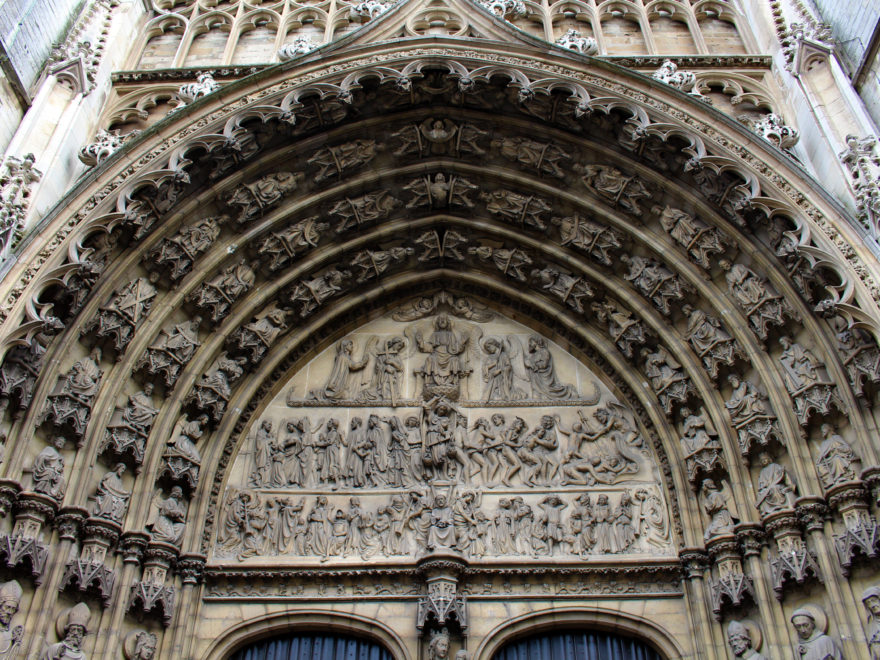Kevin Clark and Ravi Scott Jain. The Liberal Arts Tradition: A Philosophy of Christian Classical Education. Classical Academic Press, 2013.
In The Liberal Arts Tradition Kevin Clark and Ravi Jain endeavor to set the record straight about what made  up the course of study in the classical tradition of education. As two longtime friends and colleagues at the Geneva School–one of the early and well-developed classical Christian schools located outside of Orlando, FL–they combined their talents in rhetoric/philosophy (Kevin) and math/science (Ravi) and their mutual love of theology and the tradition to broaden the focus of the conversation about classical education.
up the course of study in the classical tradition of education. As two longtime friends and colleagues at the Geneva School–one of the early and well-developed classical Christian schools located outside of Orlando, FL–they combined their talents in rhetoric/philosophy (Kevin) and math/science (Ravi) and their mutual love of theology and the tradition to broaden the focus of the conversation about classical education.
The Liberal Arts Tradition participates in the recovery movement that goes back to Douglas Wilson’s discovery of Dorothy Sayer’s 1947 Oxford address, “The Lost Tools of Learning.” Their central argument is that, while the first stage of their movement focused on the Trivium or language arts of Grammar, Logic and Rhetoric, which Dorothy Sayers called the lost tools of learning, the paradigm of the liberal arts tradition was actually much broader. Before them, Robert Littlejohn and Charles Evans, in their 2006 book Wisdom and Eloquence, had argued for the inclusion of the Quadrivium or mathematical arts from students’ earliest years, and against the idea of stages of learning following the Trivium as historically accurate. They claimed that Dorothy Sayers had invented the paradigm of students progressing through a Grammar, Logic and Rhetoric stage, and instead they argued for the presence of all the liberal arts from the earliest grades, emphasizing that a PK-12 curriculum should be planned from top-down with a focus on necessary linguistic and mathematical skills (their “tools of learning”) established intentionally along the way. Building on this conversation, Kevin and Ravi paint a broader picture of the liberal arts tradition, including piety, gymnastic and music as a fundamental approach to early education, and the disciplines of philosophy (natural, moral and divine/metaphysical) and theology as the crowning point. One of their main emphases is on the holistic nature of this broader paradigm, training students in heart, soul, mind and body, rather than just the mind.
The book walks the reader systematically through each aspect of this paradigm, providing academic style references for high points in the tradition and secondary sources to support their characterizations of its philosophy and emphases. They keep up a running polemic with modernism and its claims to objectivity, its scorning of the tradition and of Christianity, and its focus on the disembodied mind to the neglect of a more formative approach. The book’s main accomplishment is to take the movement’s discourse about the classical tradition of education to the next level of complexity by undergirding their claims with academic research. Their descriptions of piety, gymnastic and music provide a much needed counter-balance to some of the tendencies of a Sayers-Wilson grammar school approach. While they are to be commended for how they have traced the trajectory of each classical “discipline,” often making innovative connections–say, with the scientific revolution’s reliance on Greek thought and Christian principles–at times they seem to have bitten off more than they can chew. Given the size of their work, they are prevented from being able to treat various disciplines in anything more than broad brush strokes, and a certain stylistic unevenness and argumentative meandering are the unfortunate result. Also, their focus on captain figures and the historical development of the cutting edge of each discipline overshadows the practical application of the philosophy to PK-12 education today; while it’s wonderful to hear about Kepler and Newton, Aquinas and Cicero, and other leading thinkers, and the book is not without paragraphs focused on important courses, subjects or methods, the writers fall short of unpacking fully the implications of how, for instance, the tradition of philosophy or the liberal arts would inform a pedagogy for teaching those ‘subjects’.
Without a doubt, Clark and Jain’s The Liberal Arts Tradition is a must-read for any educator in the classical Christian school movement, and will function as a starting place for further detailing, clarification and application of their compelling and suggestive paradigm.


Leave a Reply